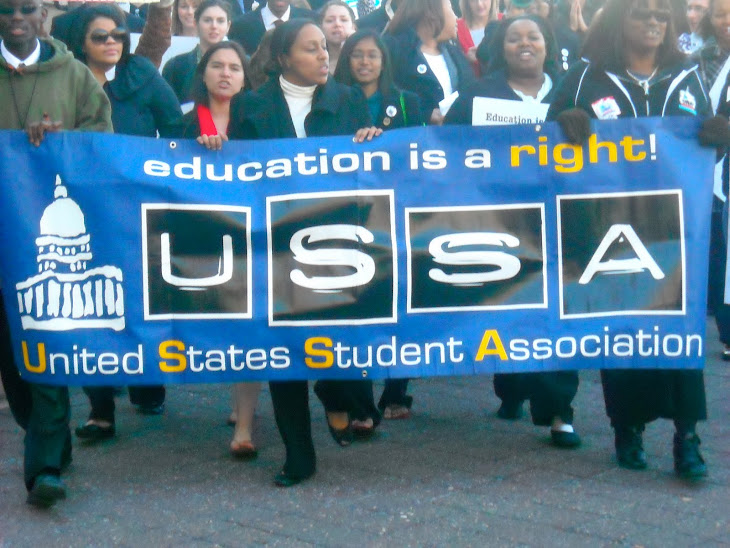 Young Americans face “lasting damage” from the dual crises in the financial sector and in personal finance, making it urgent that Congress pass strong financial reform legislation.
Young Americans face “lasting damage” from the dual crises in the financial sector and in personal finance, making it urgent that Congress pass strong financial reform legislation.Risking Our Future Middle Class: Young Americans Need Financial Reform, released on Thursday by three leading youth advocacy organizations – the United States Student Association, U. S. Public Interest Research Group, and Demos – documents how hard youth have been hit by the country’s economic crisis.
- Young people (16-24 year-olds) have higher unemployment rates than any other population group,
- Programs have been cut, or tuitions increased, or both, at most of the country’s public colleges and universities.
- Young Americans have high levels of indebtedness due to private student loans, credit card balances, mortgages and car loans.
“From credit cards to private student loans, we’ve been aggressively targeted by abundant but risky credit,” explained Andrew Merki, a junior at the University of Indiana at Bloomington and the chair of the Indiana PIRG, a member of U.S. PIRG. “The tens of thousands of dollars in high interest loans I’ll have to repay at graduation will benefit the banks, but keep me in a financial hole.”
“This is a generation of 18 – 29 year olds unemployed or involuntarily out of the workforce,” added Gregory Cendana, President of the United States Student Association. “With jobs scarce, higher education should be an accessible training ground, but instead it is under siege.”
Risking Our Future Middle Class documents that debt has become a generation defining characteristic for today’s young adults. For instance, private student loans typically have uncapped, variable interest rates reaching as high as 18% in recent years, and they cannot be deferred in the event of job loss.
“Young adults need tools to save and build assets for the future, otherwise they’ll be dragged down by a predatory financial market,” noted Caleb Gibson of Demos. “We need more disclosure, fair pricing, and protection from the excessive risk taking of banks.”
Senator Dick Durbin (D-IL) recently sponsored an amendment to the Wall Street reform package that would ensure that private loans from the country’s largest student lender, Sallie Mae, fall under the CFPB’s authority. “Too often, students, who don’t realize the long-term impact of their loan decisions, fall victim to high interest rates and predatory lending. We owe it to them and their families to make sure higher education remains accessible by putting strong protections in place that prevent abusive practices in private student lending.”
Similar legislation passed the House in December. According to Americans for Financial Reform, a coalition of more than 250 reform organizations including U.S. PIRG, USSA, and Demos, industry opponents of the strongest parts of the reform package have been spending almost $1.4 million a day since the beginning of 2009 in an attempt to weaken the pending legislation through special interest carve-outs and weakening amendments.

No comments:
Post a Comment